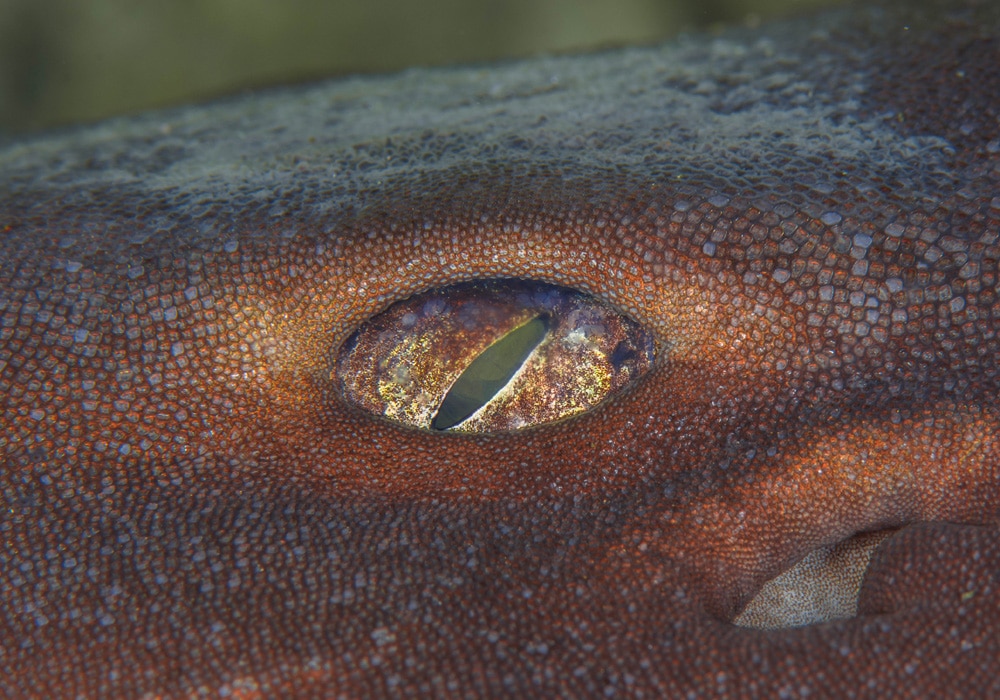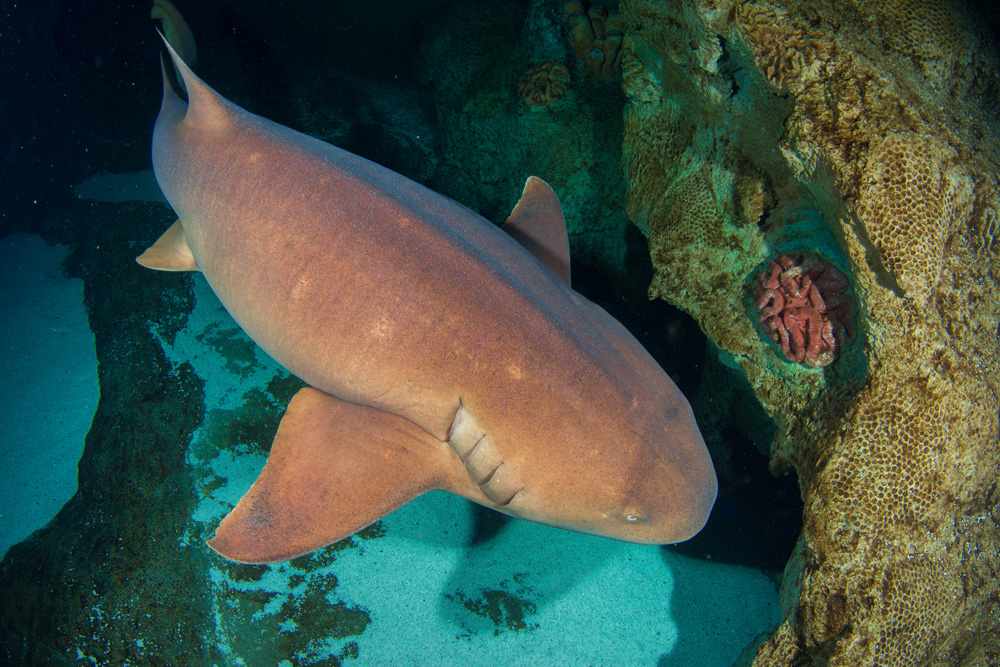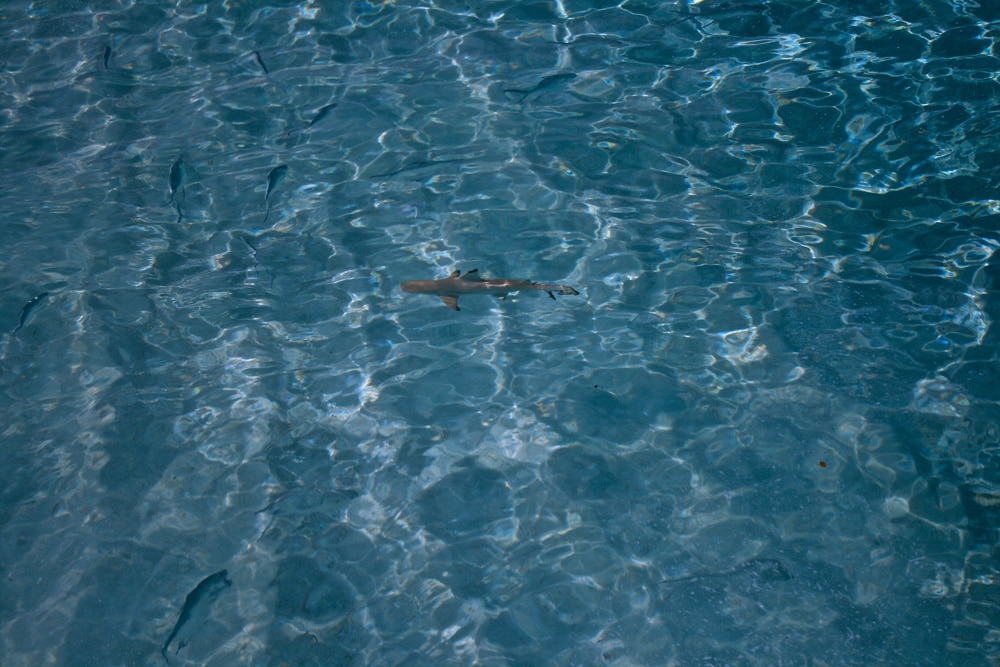Marine Life & Conservation Blogs
Sharks: The Oceans Greatest Mystery – Part 3

Sharks are a truly incredible animal that have evolved and shaped themselves to be the perfect predator which, in turn, has shaped our oceans and the animals that live within it. Sharks have existed on our planet for up to 400 million years and throughout that time they have become one of the most numerous top predators on our planet, they have lived through 5 major extinction events when many other species died out. Sharks have been doing something right all this time, but at this very moment sharks are facing a threat that is so powerful that it is literally changing the face of our planet, and that force is Humans, it’s us. Sharks are being killed at an unprecedented rate, a rate of unimaginable scale. Recent studies by scientists have shown that since 1970 we have reduced Shark & Ray populations by a staggering 71%.
What threats do they face?
Sharks worldwide are currently dealing with a huge array of issues which is putting the whole group at risk. Sharks are being killed for their Fins, Oil, Teeth/Jaws and other members of the group, such as Manta Ray’s, are killed for their Gill Rakers and wings.
Firstly, let us talk about what is potentially the most inhumane form of animal harvesting, Shark Finning. This is the practice of removing a Sharks Fins, usually whilst the animal is still alive, and then discarding the rest of the animal back into the Ocean. The Shark is usually still alive throughout the whole process and the animal usually dies from drowning or blood loss on the sea floor. Shark fins only account for around 2% of a Sharks average body weight which means that 98% of the animal is merely tossed back into the ocean, 98% of the animal is just simply wasted. Now this begs the question what are Shark fins used for? Well, they are used in an Asian dish known as Shark Fin Soup, now Shark fin is tasteless, which means that the fin only adds mere texture to a Chicken or Pork flavoured broth which further begs the question, why use Shark Fin and not something else to add texture. Well, the soup serves more as a status symbol and it is known as the food of emperors and kings, those who can afford and serve Shark Fin at a banquet or party are revered as wealthy.
Sharks are also harvested for traditional medicine, where it is believed that by ingesting Shark parts such as their cartilage or liver, it can give you a Sharks “magical” powers and abilities. The most common rumour is that Sharks do not get cancer, and by consuming Sharks you can also become immune to cancer. This is of course false; Sharks do in fact get cancer and with recent additions of pollutants and chemicals into the oceans from human activities, sharks get cancer now more than ever, along with a whole host of other ailments. This means that by eating Sharks you are actually more likely to catch illnesses and ailments such as Mercury poisoning, due to the fact that Sharks hold a large quantity of such toxic substances in their bodies.
Aside from Shark finning, they are also at huge risk of becoming caught in nets and on lines as Bycatch, this means that they get caught despite not being the targeted species. For example, Sharks are commonly caught on Tuna hooks or in Tuna nets. Unfortunately, in these instances they tend to not even have their fins removed and, in this case, the whole animal is wasted. The sharks are usually already dead after being brought up due to the amount of time they have sat on hooks and usually die from exhaustion or drowning. Sometimes Sharks are killed in sport fishing tournaments as game fish, where people will go out on Shark fishing days and many Sharks will be killed for the chance of beating a previous record.
Sharks are also at risk of habitat loss, in the same way as Jaguars and Macaws in the Amazon, and Elephants in Asia. Human activities such as fishing, expansion, pollution, mining and Global Warming are all threatening Sharks Habitats. Flapper Skates, which are also known as Common Skates, are now Critically Endangered around the UK due to trawling damaging the egg laying sites for this species. The Bimini Islands, which are famous for the presence of a Lemon Shark Nursery, were in trouble a few years back with plans for demolishing a section of the Mangrove Forest on the island, to make way for a Golf Course. Thankfully it wasn’t successful, but if it was it could have put the Lemon Sharks at extreme risk as this is an area needed for the beginning of the lemon shark’s life cycle.
Another factor putting sharks at risk, is the amount of plastic pollution and pollutants in the water. Plastics can block the digestive system of plankton feeding Sharks and Ray’s such as Whale Sharks and Manta Ray’s, and discarded fishing gear such as nets can entangle up Sharks and other aquatic animals. The amount of fishing being done in the oceans also puts sharks at risk from their food supply disappearing, as humans fish the oceans, we are inadvertently removing the fish stocks that Sharks rely on for their survival.
Sharks & People
Sharks are an apex predator in the World’s Oceans, and it may seem far-fetched to believe, but we depend on Sharks more than you might think. Let us start with fish, currently 10-12 percent of the world’s population relies on the Ocean’s fish for their diet and survival, and Sharks help to keep fish stocks healthy by eating sick, injured or diseased fish and holding the toxins and diseases in their bodies until they die, this is why Sharks have such a strong immune system. With Sharks hunting these fish, it helps to keep the stocks healthy and means the fish that we catch and eat won’t make us sick.
Sharks also play a vital role in the Planet’s oxygen cycle, the Ocean essentially acts as a giant blue lung taking in Carbon Dioxide from the air, seagrass beds and plankton then absorb the Carbon Dioxide and release it as Oxygen back into the atmosphere. If Sharks were to disappear then other animal stocks would explode out of proportion and eat all of the sea grass and/or plankton and the oxygen cycle would be hindered. An example is, if Tiger Sharks were to disappear, then the Turtle population would rapidly increase, allowing the Turtles to eat all of the Seagrass, which would mean we lose a key component of the production of our oxygen. Along with plankton, seagrass helps to produce 75% of the Oxygen we breathe daily. Seagrass Meadows also store more Carbon than any Forest on land making them one of the most productive habitats on our Planet.
How can we be better Ambassadors to Sharks?
It may seem like there is not much we can do, but you would be surprised to hear that there is in fact a lot that we can do to help Sharks. Sharks have been tarnished with a hugely negative reputation, a reputation that can make protecting them difficult. The problem is people are told their whole lives that Sharks are mindless killing machines and that if you go in the Ocean, you are likely to meet your timely demise, but we now know that these stories are literally just that, stories. One of the best ways of protecting sharks is to help people better understand them and all it may take is a simple conversation, a conversation where you can debunk myths, a conversation where you can change their perspective. Jacques Cousteau once said, “People protect what they love”, and this saying holds a lot of weight. People will protect sharks if they love them, and the only way to allow people to love them is for them to first understand them, and understanding first comes through education. If people love Sharks, then the whole cycle starts again with them going out and telling people about Sharks. If you are Diver and or, Underwater Photographer, then you can share your experiences and imagery with people, which will allow their perspectives to shift, and you would be surprised to find out how beneficial Social media can be for Sharks, as it’s a place where you can share your images and stories to a very wide audience across the globe.
Another way to help is to not buy Shark Fin Soup or any Shark products, it may be tempting to buy a Shark tooth necklace or Shark in a jar when on holiday, or even to try Shark Fin Soup, but this will only feed the problem, if we can do this then, when the buying stops then the killing can too.
Something that has been realised recently is that Sharks are worth more alive than dead and over a Sharks lifetime, it can bring in many millions of Dollars through Echo-Tourism, compared to the couple of dollars it will bring into a fisherman if the animal is killed. Thankfully, areas that were once Shark fishing hotpots, have turned to becoming areas where Shark populations have exploded, due to an influx of Divers from across the globe going to see Sharks alive and healthy. Places such as Raja Ampat, The Maldives, and The Galapagos Islands have put protections on sharks and in doing so attract divers to these areas where Sharks are protected, with divers going to these areas only further helps and funds the Protected area and allow the work to continue.
A final thing you can do is to write to your Local MP about needing larger and stronger Marine Protected areas, with stronger protections from commercial fishing. As it stands there is less than 0.5% of our World’s Oceans that have complete protection from commercial fishing. Scientists have stated that for our Oceans to be protected, we need at least 30% of our Oceans to have complete protection for Sharks, Fish and other marine mammals, which will, in turn, allow our Oceans to stabilise themselves.
There is still a lot that you can do and if you do just one of these things, you could help change the fate of Sharks and allow them to continue thriving and shaping our oceans for millennia to come.
So that’s it, a deep dive into Sharks, our Oceans Greatest Mystery. A look into their biology, behaviour and secrecy. I hope after this you come away with a better understanding and appreciation for this incredible group of animals, I hope after this you now look at a Shark and see not a monster, but an animal that is incredibly misunderstood and one that not only keeps our Oceans healthy, but also our whole Planet. Sharks are a key component in our survival, and with our help they can continue to be our Oceans Greatest Mystery.
Follow Donovan on Instagram at www.instagram.com/donovans_reefs
Marine Life & Conservation Blogs
Creature Feature: Dusky Shark

 In this series, the Shark Trust will be sharing amazing facts about different species of sharks and what you can do to help protect them.
In this series, the Shark Trust will be sharing amazing facts about different species of sharks and what you can do to help protect them.
This month we’re taking a look at the Dusky Shark, a highly migratory species with a particularly slow growth rate and late age at maturity.
Dusky sharks are one of the largest species within the Carcharhinus genus, generally measuring 3 metres total length but able to reach up to 4.2 metres. They are grey to grey-brown on their dorsal side and their fins usually have dusky margins, with the darkest tips on the caudal fin.
Dusky Sharks can often be confused with other species of the Carcharhinus genus, particularly the Galapagos Shark (Carcharhinus galapagensis). They have very similar external morphology, so it can be easier to ID to species level by taking location into account as the two species occupy very different ecological niches – Galapagos Sharks prefer offshore seamounts and islets, whilst duskies prefer continental margins.
Hybridisation:
A 2019 study found that Dusky Sharks are hybridising with Galapagos Sharks on the Eastern Tropical Pacific (Pazmiño et al., 2019). Hybridisation is when an animal breeds with an individual of another species to produce offspring (a hybrid). Hybrids are often infertile, but this study found that the hybrids were able to produce second generation hybrids!
Long distance swimmers:
Dusky sharks are highly mobile species, undertaking long migrations to stay in warm waters throughout the winter. In the Northern Hemisphere, they head towards the poles in the summer and return southwards towards the equator in winter. The longest distance recorded was 2000 nautical miles!
Very slow to mature and reproduce:
The Dusky Shark are both targeted and caught as bycatch globally. We already know that elasmobranchs are inherently slow reproducers which means that they are heavily impacted by overfishing; it takes them so long to recover that they cannot keep up with the rate at which they are being fished. Dusky Sharks are particularly slow to reproduce – females are only ready to start breeding at roughly 20 years old, their gestation periods can last up to 22 months, and they only give birth every two to three years. This makes duskies one of the most vulnerable of all shark species.
The Dusky Shark is now listed on Appendix II of the Convention on the Conservation of Migratory Species (CMS), but further action is required to protect this important species.
Scientific Name: Carcharhinus obscurus
Family: Carcharhinidae
Maximum Size: 420cm (Total Length)
Diet: Bony fishes, cephalopods, can also eat crustaceans, and small sharks, skates and rays
Distribution: Patchy distribution in tropical and warm temperate seas; Atlantic, Indo-Pacific and Mediterranean.
Habitat: Ranges from inshore waters out to the edge of the continental shelf.
Conservation status: Endangered.
For more great shark information and conservation visit the Shark Trust Website
Images: Andy Murch
Diana A. Pazmiño, Lynne van Herderden, Colin A. Simpfendorfer, Claudia Junge, Stephen C. Donnellan, E. Mauricio Hoyos-Padilla, Clinton A.J. Duffy, Charlie Huveneers, Bronwyn M. Gillanders, Paul A. Butcher, Gregory E. Maes. (2019). Introgressive hybridisation between two widespread sharks in the east Pacific region, Molecular Phylogenetics and Evolution 136(119-127), https://doi.org/10.1016/j.ympev.2019.04.013.
Marine Life & Conservation Blogs
Creature Feature: Undulate Ray

 In this series, the Shark Trust will be sharing amazing facts about different species of sharks and what you can do to help protect them.
In this series, the Shark Trust will be sharing amazing facts about different species of sharks and what you can do to help protect them.
This month we’re looking at the Undulate Ray. Easily identified by its beautiful, ornate pattern, the Undulate Ray gets its name from the undulating patterns of lines and spots on its dorsal side.
This skate is usually found on sandy or muddy sea floors, down to about 200 m deep, although it is more commonly found shallower. They can grow up to 90 cm total length. Depending on the size of the individual, their diet can range from shrimps to crabs.
Although sometimes called the Undulate Ray, this is actually a species of skate, meaning that, as all true skates do, they lay eggs. The eggs are contained in keratin eggcases – the same material that our hair and nails are made up of! These eggcases are also commonly called mermaid’s purses and can be found washed up on beaches all around the UK. If you find one, be sure to take a picture and upload your find to the Great Eggcase Hunt – the Shark Trust’s flagship citizen science project.
It is worth noting that on the south coasts, these eggcases can be confused with those of the Spotted Ray, especially as they look very similar and the ranges overlap, so we sometimes informally refer to them as ‘Spundulates’.
Scientific Name: Raja undulata
Family: Rajidae
Maximum Size: 90cm (total length)
Diet: shrimps and crabs
Distribution: found around the eastern Atlantic and in the Mediterranean Sea.
Habitat: shelf waters down to 200m deep.
Conservation Status : As a commercially exploited species, the Undulate Ray is a recovering species in some areas. The good thing is that they have some of the most comprehensive management measures of almost any elasmobranch species, with both minimum and maximum landing sizes as well as a closed season. Additionally, targeting is entirely prohibited in some areas. They are also often caught as bycatch in various fisheries – in some areas they can be landed whilst in others they must be discarded.
IUCN Red List Status: Endangered
For more great shark information and conservation visit the Shark Trust Website
Image Credits: Banner – Sheila Openshaw; Illustration – Marc Dando
-

 News3 months ago
News3 months agoHone your underwater photography skills with Alphamarine Photography at Red Sea Diving Safari in March
-

 News3 months ago
News3 months agoCapturing Critters in Lembeh Underwater Photography Workshop 2024: Event Roundup
-

 Marine Life & Conservation Blogs3 months ago
Marine Life & Conservation Blogs3 months agoCreature Feature: Swell Sharks
-

 Blogs2 months ago
Blogs2 months agoMurex Resorts: Passport to Paradise!
-

 Blogs2 months ago
Blogs2 months agoDiver Discovering Whale Skeletons Beneath Ice Judged World’s Best Underwater Photograph
-

 Marine Life & Conservation2 months ago
Marine Life & Conservation2 months agoSave the Manatee Club launches brand new webcams at Silver Springs State Park, Florida
-

 Gear Reviews3 months ago
Gear Reviews3 months agoGear Review: Oceanic+ Dive Housing for iPhone
-

 Gear Reviews2 weeks ago
Gear Reviews2 weeks agoGEAR REVIEW – Revolutionising Diving Comfort: The Sharkskin T2 Chillproof Suit

























